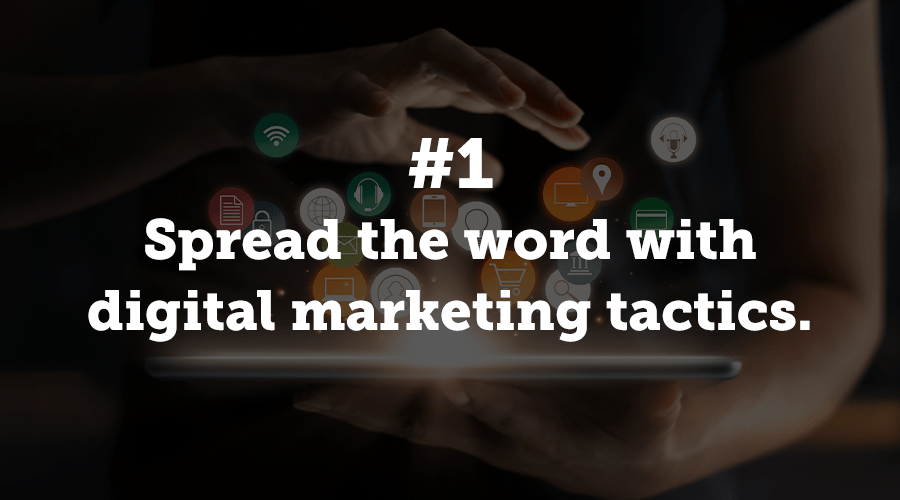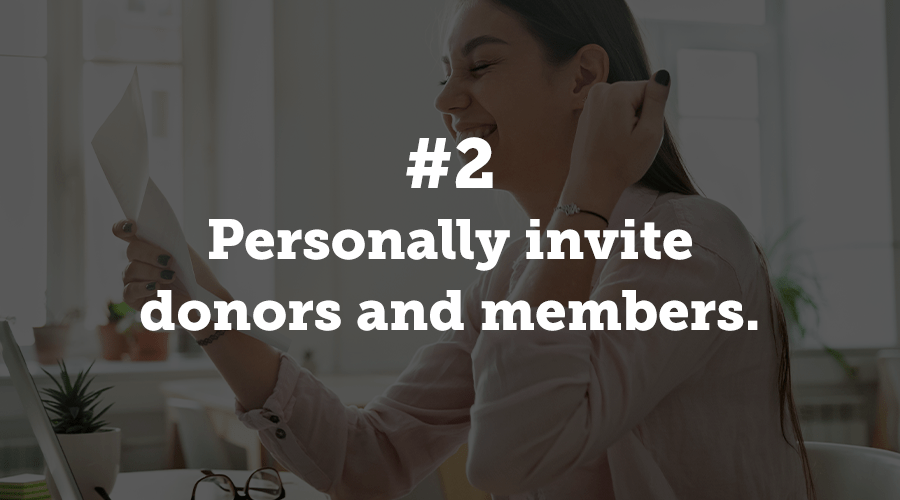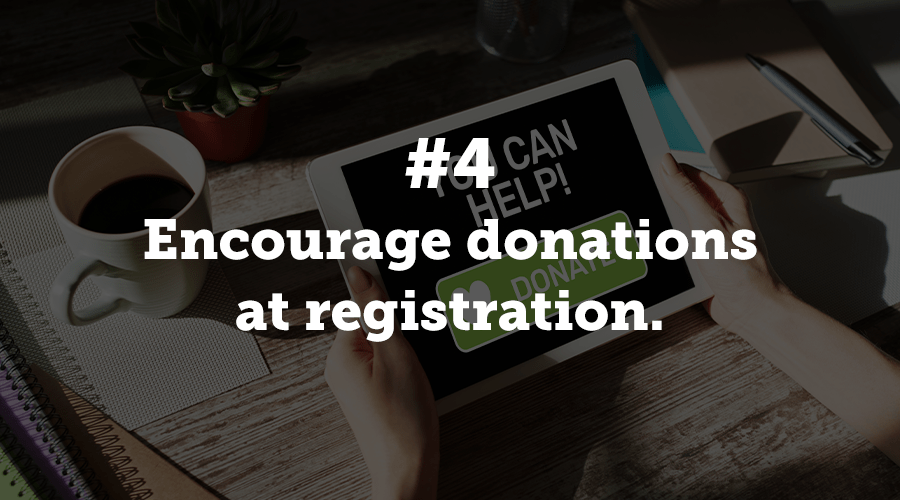Exploring Virtual Events: 6 Best Practices for Nonprofits

Written by John Killoran
Many nonprofit events have been flipped upside down due to the coronavirus. Instead of cancelling, here are some tips for transitioning to a virtual event.
Virtual events are a rising engagement opportunity for organizations all across the globe. While it has been steadily increasing for some time now, its popularity and necessity has skyrocketed in recent months as a result of COVID-19.
Perhaps your nonprofit is in the beginning stages of virtual event exploration. Maybe you’ve already hosted one, maybe you’re in the planning stage, or maybe you’re still considering your options. At Snowball, we work with nonprofits of all shapes and sizes to provide the tools needed to maximize fundraising revenue— and that includes top virtual fundraising resources!
That’s why we’ve put together this useful guide to help you, as a nonprofit professional, get started planning, organizing, and pulling off top-tier virtual events. Here are six best practices to keep in mind:
- Spread the word with digital marketing tactics.
- Personally invite donors and members.
- Make tickets affordable.
- Encourage donations at registration.
- Invest in high-quality streaming tools.
- Provide opportunities for breakout groups.
The pandemic has brought about an unpleasant situation for all, and nonprofit organizations have been hit among the hardest. But with effective virtual event practices, you can bring back lost revenue, build donor relationships, and push your mission forward even in the face of a crisis. Let’s get started!

1. Spread the word with digital marketing tactics.
One of the most crucial elements involved in successfully pulling off any event (virtual or otherwise) is effectively getting the word out to your community. After all, you can’t expect visitors to show up for an event they’ve never heard of before!
That’s where strategic digital marketing comes in. Since your event is a virtual one, it only makes sense that your promotions would take place in the virtual sphere as well. Here are three key components of a successful event marketing strategy:
- Frequently updated website: It’s a good idea to create an event-specific website or page dedicated to keeping attendees and other supporters in-the-know. That way, all your key information is consolidated in a centralized location and it’s easy for attendees and prospects to learn more.
- Social media promotion: Your organization likely already has a few social media accounts to share information and connect with your supporters online. That’s why it’s a great opportunity to promote your upcoming virtual event! Your followers already support your cause, so they’re more likely to take part in your event as well. Be sure to link back to your event website or web page in every post so that users can easily take the next steps.
- Text or email blasts: You probably have a list of supporters’ phone numbers and email addresses. Maybe you use them to send donation requests or maintain organization-wide updates. But this contact information is also a valuable resource for informing your network of support about your upcoming event and how they can get involved!
By incorporating these digital marketing tactics (and more!) into your event promotion strategy, you can effectively spread the word far and wide, reaching new and established supporters alike.

2. Personally invite donors and members.
While it might not be realistic to personally invite every prospective attendee to your upcoming event, it is important to prioritize your top donors and members. After all, these are the people that have consistently supported your organization for some time now. You wouldn’t be where you are today without them.
When you make it a point to personally invite these key stakeholders, you can:
- Raise more donations. When your event promotions are more generalized in nature, it can be easy for important information to slip past an individual without taking notice. A personal invitation, however, is harder to ignore. Even if a donor is unable to make it to your virtual event, (for whatever reason) they might choose to support your efforts with a donation instead.
- Build stronger relationships. A huge aspect of effective nonprofit fundraising and management processes is the building of lifelong donor relationships. When you show donors that you appreciate their support of your organization, even when they’re not making a financial contribution, they’re more likely to become loyal event attendees and highly engaged members.
Consider taking the time out of your day to call up these significant donors and invite them to your upcoming event. Let them know how much you would appreciate their support, both financially and otherwise. Even better, you might set up a video call so you can speak to the donor face-to-face (or as close as you can get to it!).

3. Make tickets affordable.
One of the greatest benefits of hosting a virtual event rather than a traditional in-person one is the cost-effectiveness. While you might have to invest in some online fundraising and virtual event software solutions, the money you’ll save by cutting back on venue, catering, and staffing costs will leave you on top!
Additionally, since a virtual event will be cheaper for the organization to host, it should also be cheaper for supporters to attend. Especially in the midst of a global economic crisis when individuals might not have much to spare, it’s important that you keep your tickets affordable.
The actual ticket price, however, will depend on your organization’s unique audience. If your supporters tend to skew toward the wealthier side, you might be able to charge more. Take a look at past fundraising data like average gift size, donor demographics and income levels, etc. to get a feel for your supporters’ financial situations.
Bonus tip: Make sure users can register and pay for your event in one simple process! You can learn more about virtual event registration with this handy guide.

4. Encourage donations at registration.
While setting a base ticket price on the lower side can make sure your event is more accessible to a wider variety of supporters, it can also open up the door for accepting donations on top of any registration costs. After all, attendees are not likely to make an additional gift with a hefty ticket price, but may feel more generous giving when the registration fee is already low.
Although you could just add a simple option to include a donation with the ticket purchase, this is also your chance to introduce bonus perks such as:
- Exclusive opportunities: Depending on the type of virtual event you’re hosting, you may be able to offer unique opportunities reserved for attendees who make a certain level donation in addition to their ticket price. Maybe this is access to exclusive online resources leading up to the event, a sneak peak at an auction catalog, or an invitation to an online Q&A with the board of directors.
- Branded merchandise: Consider designing limited-time merchandise to celebrate your virtual event. Then, you can include an option amid the registration process to “donate $X here to receive an event t-shirt.” Not only is it a great perk to encourage extra donations, but it’s also a physical reminder of your organization and the event in the future.
As always, effectively accepting donations requires the use of top-tier donation tools. Check out this list of free fundraising software from Snowball to find the best tools and resources that won’t break the bank.

5. Invest in high-quality streaming tools.
Most virtual events include some sort of video streaming tools to capture and share the event with virtual attendees. While this is possible to do in a DIY-format with just a smartphone and a social media account, it’s important to note that these low quality tools are significantly less likely to capture the audience’s attention and retain it throughout the event.
Instead, consider investing in the following live-streaming resources to ensure a well put together event:
- Camera: Smartphone recording tools, even those of the highest quality for personal usage, are simply not up to standard for professional use. Do some research to learn more about the best cameras and recording tools in your budget!
- Microphone: Similarly, you’ll want to make sure your audio recordings are of the highest quality. Although your camera will likely include an internal microphone, it’s a good idea to purchase external mics for speakers and presenters.
- Streaming software: Finally, you should consider investing in software solutions that are designed specifically for video live-streaming. This way, you can rest easy knowing your video and audio will be effectively streamed to attendees’ own screens.
According to re:Charity, live-streaming for nonprofits is one of the best ways to stay relevant in a difficult time. However, doing it the right way is crucial for making the most out of the opportunity and resulting in a high ROI.

6. Provide opportunities for breakout groups.
A huge part of most traditional nonprofit events is the time set aside for breakout sessions. This way, attendees are able to get to know one another, create a more personalized experience, and share ideas with like minded individuals.
Breakout groups are also a big element that’s often missing from virtual events. When attendees are expected to sit back and listen to presenters speak and share their experiences without being provided an opportunity to share their own, it can become a boring, lecture-style event pretty quickly.
Instead, consider implementing breakout sessions as a way to spice things up and provide one of the most popular elements of traditional events in this new digital format. When your nonprofit leaders act as small group facilitators, it gives attendees a way to connect with your leadership on a deeper level and even strengthen their support of your organization.
And finally, a bonus tip— be sure to follow up with event attendees afterward and ask for their feedback! This practice gives you a better idea of which aspects went well and which show room for improvement. Then, you have key insights that can be implemented in your next fundraising event (whether virtual or otherwise!). Good luck!
About the Author

John Killoran is an inventor, entrepreneur, and the Chairman of Clover Leaf Solutions, a national lab services company. He currently leads Clover Leaf’s investment in Snowball Fundraising, an online fundraising platform for nonprofit organizations.
Snowball was one of John’s first public innovations; it’s a fundraising platform that offers text-to-give, online giving, events, and peer-to-peer fundraising tools for nonprofits. By making giving simple, Snowball increases the donations that these organizations can raise online. The Snowball effect is real! John founded Snowball in 2011. Now, it serves over 7,000 nonprofits and is the #1 nonprofit fundraising platform.